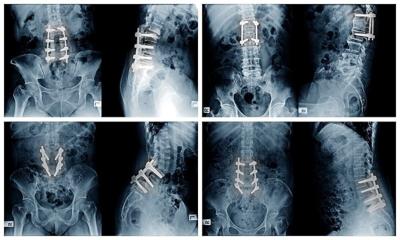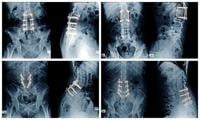Key Takeaways
Orthopedic surgeons need to adapt low back procedures based on a person’s sex
Men have narrower pelvises than women, making it harder to place rods and screws in a straight line
If not anticipated, this can make surgeries longer and require surgeons to bend rods to fit the patient’s anatomy
FRIDAY, Oct. 17, 2025 (HealthDay News) — The placement of orthopedic screws and rods during spinal fusion surgery should vary depending on whether you’re a man or a woman, according to a new study.
Sex-based anatomical differences in the pelvis make it essential that surgeons approach men and women differently when fusing and stabilizing the spine, researchers recently wrote in the journal Spine Deformity.
Men have a narrower pelvis, which means that screws and rods need to be placed differently for them than in women.
Specifically, it’s harder to connect screws to rods in a straight line in men, leading to additional rod bending or other adjustments during surgery, researchers said.
“In today’s era of personalized medicine, understanding the differences in anatomy between individuals is key to delivering the best possible surgical care,” senior researcher Dr. James Lin, an assistant professor of orthopedics at Mount Sinai Health System in New York City, said in a news release.
“Our study is the first to show that men and women may benefit from different approaches when placing pelvic screws during spine surgery, due to differences in pelvic shape,” Lin said.
Surgery for low back pain sometimes requires that the lower spine be fused, with rods and screws attaching the vertebrae of the lower spine to the pelvis, according to the University of Maryland Medical Center.
For the study, researchers compared 185 cases performed by three orthopedic surgeons, using X-rays and CT scans to assess screw placement and anatomical differences between male and female patients.
Results showed that the narrower pelvis in men causes rods to angle inward, rather than the parallel alignment that’s preferred.
Researchers said surgeons should anticipate these differences and look into adjustments that might limit the need to bend rods during procedures to make them fit the male anatomy.
If surgeons better tailor procedures to the male anatomy, it could lead to shorter surgeries, fewer hardware problems and more reliable outcomes for patients, researchers said.
“These findings underscore the importance of patient-specific planning, which — when combined with advanced navigation technologies and custom implants — can significantly improve alignment and outcomes in spinal deformity surgery,” Lin said.
More information
The University of Maryland Medical Center has more on lumbar fusion.
SOURCE: Mount Sinai, news release, Oct. 2, 2025
What This Means For You
Patients should talk with their orthopedic surgeon about how their spinal fusion procedure will take place and what advance planning has been made for it.














(0) comments
Welcome to the discussion.
Log In
Keep it Clean. Please avoid obscene, vulgar, lewd, racist or sexually-oriented language.
PLEASE TURN OFF YOUR CAPS LOCK.
Don't Threaten. Threats of harming another person will not be tolerated.
Be Truthful. Don't knowingly lie about anyone or anything.
Be Nice. No racism, sexism or any sort of -ism that is degrading to another person.
Be Proactive. Use the 'Report' link on each comment to let us know of abusive posts.
Share with Us. We'd love to hear eyewitness accounts, the history behind an article.